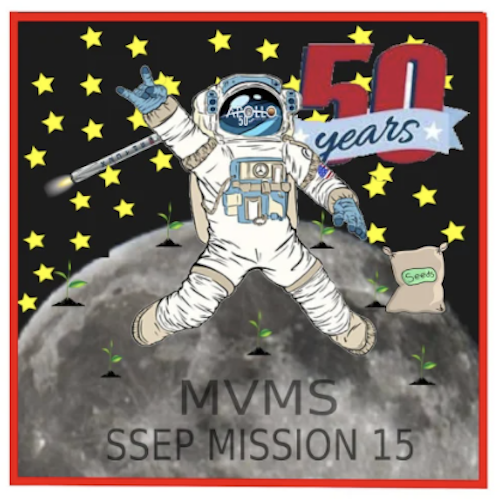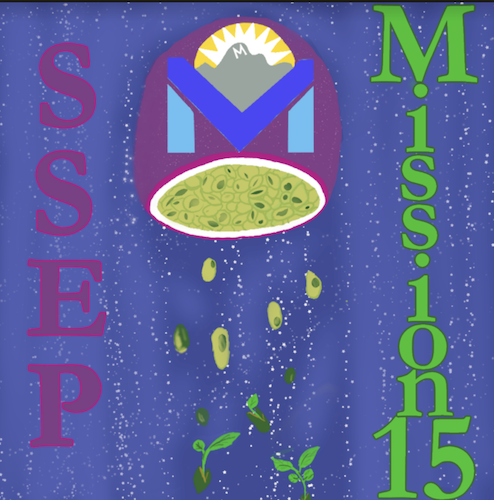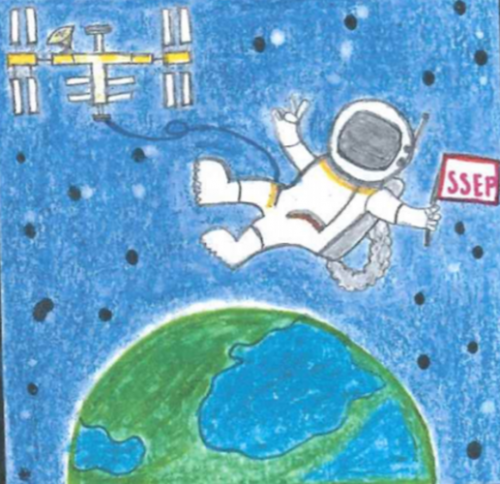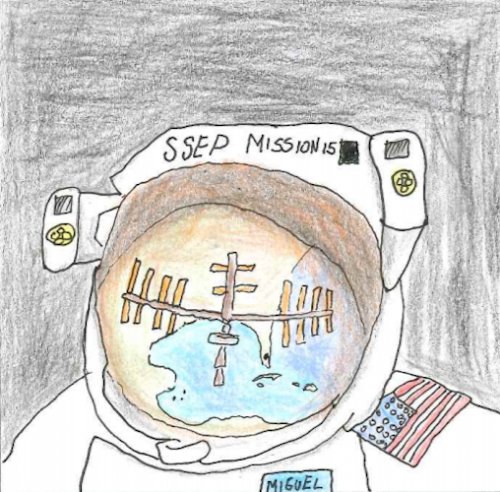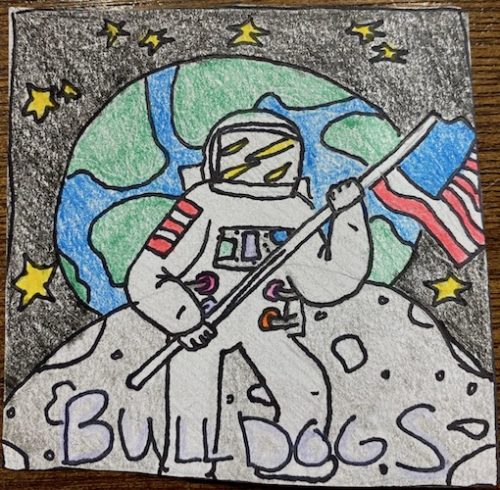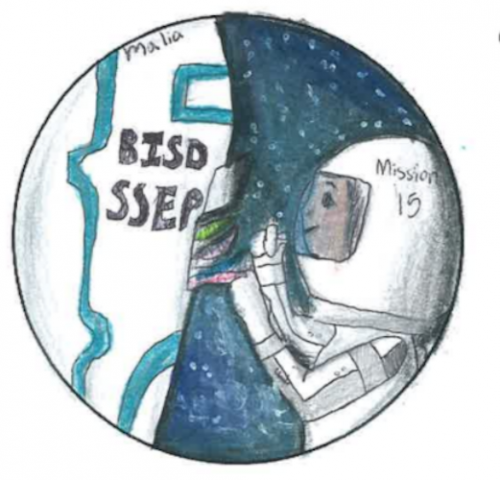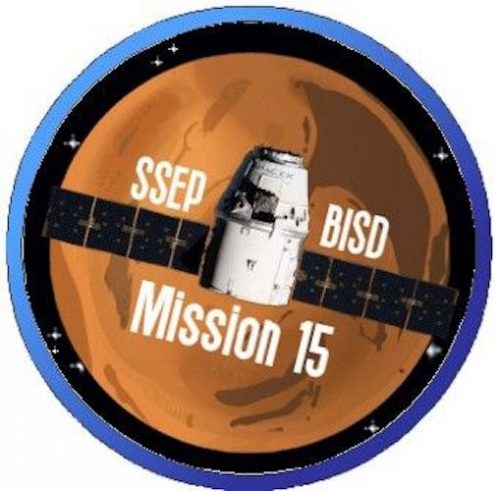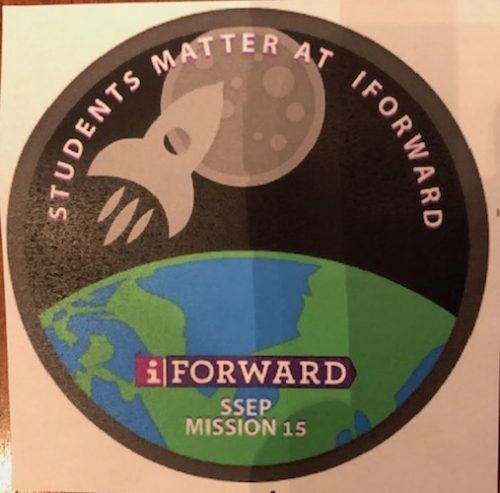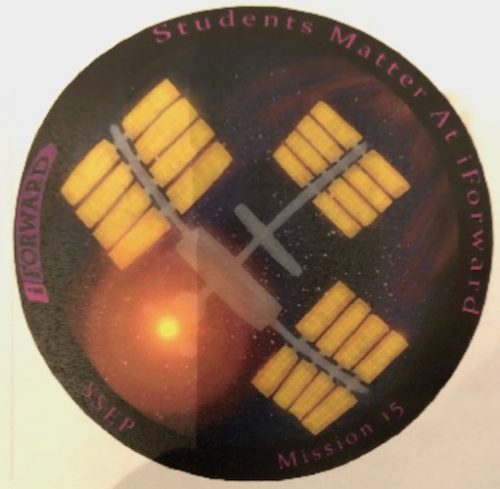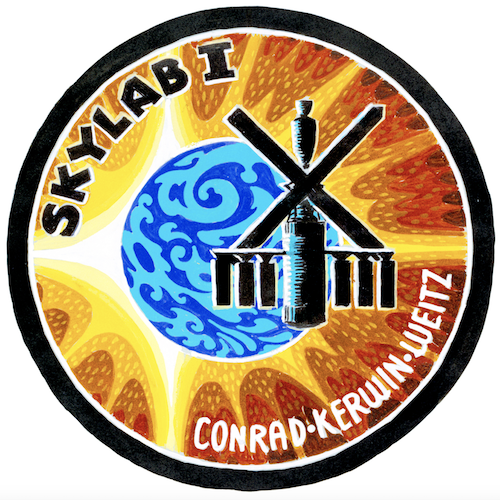
The official NASA Mission Patch for the Skylab Program. The SSEP Mission 15 to ISS Skylab payload of experiments is named in honor of the Skylab Program.
The National Center for Earth and Space Science Education, and the Arthur C. Clarke Institute for Space Education, are proud to present the 9 Mission Patches selected for flight to the International Space Station (ISS) for Student Spaceflight Experiments Program (SSEP) Mission 15 to ISS. The selected flight patches shown below resulted from local art and design competitions meant to capture the spirit of SSEP in each Mission 15 community.
The mission patch competitions foster community-wide awareness and engagement in the Student Spaceflight Experiments Program – an initiative that takes students, teachers, and the community at large to the space frontier through immersion in an authentic research experience. The 5 selected Mission 15 microgravity flight experiments from student teams, representing the 5 communities participating in Mission 15, comprise the SSEP Skylab experiments payload, named after NASA’s Skylab Program.
As a historical note, mission patches have been part of human spaceflight since the days of Project Mercury in the 1960s (see, e.g., this page at the NASA History Program Office). The official NASA mission patch for Skylab Program is shown above. The SSEP Mission Patch competitions therefore allow communities to engage in another authentic aspect of the space program. From an education standpoint, the mission patch component of SSEP forges interdisciplinary connections between STEM fields and art and design, so that SSEP is a true STEAM (Science, Technology, Engineering, Art, and Mathematics) initiative.
Across the 5 Mission 15 to ISS communities conducting Mission Patch art and design competitions, 2,308 grade K-12 students were engaged, and 2,308 patch designs were submitted. Judges within the communities selected the 9 patches shown below.
You can also read more about the Mission 15 to ISS Patch Competition at the main SSEP website.
Quickly Scroll to Individual Communities
- Moreno Valley, California
- Hillsborough County, Florida
- Bandera, Texas
- Burleson, Texas
- iForward-Grantsburg, Wisconsin
1. Moreno Valley, California
Jump to the Moreno Valley, California Community Profile
Jump to the Selected Flight Experiment on Mission 15 to ISS
Moreno Valley Unified School District’s participation in the SSEP Mission 15 Patch Competition had two separate divisions. The middle school division involved 155 middle school students (grades 6-8) while the high school division had 130 high school students (grades 9-12) participating. Each student created an individual patch design. Our flight experiment, “The Effects of Microgravity on Passion Fruit Seeds” influenced many of our student artists as they created a mission patch with images representing the experiment.
This competition involved students in learning about microgravity experiments and the history of creating “mission patches” in order to capture the excitement of spaceflight and document the missions. The judges for this year’s virtual district-level competition were members of the community including local artists, parent ambassadors, and personnel from Moreno Valley Unified School District and Moreno Valley College. The judges recognized the effort and artistry each student put into their patch.
The winners are Sophia V. (middle school) and Savannah B. (high school).
2. Hillsborough County, Florida
Jump to the Hillsborough County, Florida Community Profile
Jump to the Selected Flight Experiment on Mission 15 to ISS
Hillsborough County Public Schools opened the Mission 15 Patch Competition to 13,205 school students in our community, which represented 187 schools. We divided the competition – one for Kindergarten through Fifth Grade students, with 305 patches submitted and another for Sixth through Eighth Grade students, with 103 patches submitted. 408 students drew a design and 408 patches met the requirements for judging by a committee of teachers and community leaders. The Kindergarten through Fifth Grade Mission Patch winner is Akshaj Nagamalli, a Fifth Grade student from Deer Park Elementary in Tampa, Florida. The winning patch from the Sixth Grade through Eighth Grade competition was Miguel Garcia, Sixth grade student from Randall Middle School in Lithia, Florida.
3. Bandera, Texas
Jump to the Bandera, Texas Community Profile
Jump to the Selected Flight Experiment on Mission 15 to ISS
It was our goal to engage as many students as possible in our SSEP Mission 15 Program. Towards that end, we proposed a one mission patch competition for students in grades 6-8. The competition engaged 180students, with each participant creating a patch design. The winning patch design was voted on by the greater community at the space night presentation.
4. Burleson, Texas
Jump to the Burleson, Texas Community Profile
Jump to the Selected Flight Experiment on Mission 15 to ISS
Burleson ISD in Burleson, Texas participated in the SSEP Mission 15 Patch Competition with approximately 1,200 students participating. This was the first time our competition was completely virtual. Two competitions were held with one being for grades 3-5 and the other being for grades 6-12. Grades 3-5 saw 449 submissions, and grades 6-12 saw 728 submissions. These 3rd through 12th-grade students supported our SSEP Experiment Design teams with their individual patch design submissions. The schools submitted their patches through their art classes or individually through an online form. The patches were displayed during our official district “Space Night,” which was a virtual event this year. The winning K-5th grade patch was designed by Malia McDonell, a 5th grader from the Academy of the Arts at Bransom. Malia’s patch features an astronaut outside the ISS completing repairs. The winning 6th-12th grade patch was designed by Jordan Campbell, a 10th grader from Centennial High School. We congratulate the winners, and appreciate the hard work of all student participants!
5. iForward-Grantsburg, Wisconsin
Jump to the iForward-Grantsburg, Wisconsin Community Profile
Jump to the Selected Flight Experiment on Mission 15 to ISS
iForward of Wisconsin Online Charter School conducted a two mission patch competition for SSEP Mission 15. Our virtual online charter school is made up of approximately 1,100 students, grades K-12 from the state of Wisconsin. The Mission 15 Patch competition engaged 258 online students at the elementary, middle and high school levels. Students met the goal for the two-patch competition with 132 high school students and 126 elementary and middle school students participating. Our winning high school participant, Anna Kersten, and the elementary/middle school participant, Joseph Engwell, proved to meet a proficient level in learning goals for science, technology, engineering, art/design and math through their original creations. The winning artwork was selected to represent the iForward community on Mission 15.

